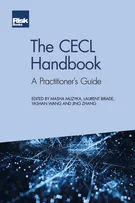Review of the Capital Adequacy Framework in Singapore
Wai Yi Lee
Introduction: Starting the Solvency II Journey
Solvency II: The journey so far
Internal Models and Solvency II
Review of the Capital Adequacy Framework in Singapore
Insurance Liabilities Under IFRS 4 Phase II and Solvency II: Almost the Same Thing?
Solvency II and Mutual Insurance Companies
The Journey Towards an Approved Internal Model
The Road to Solvency II for a Life Insurance Company
Managing Model Risk
Solvency II and Reinsurance
ORSA: A Forward-looking Approach to Risk and Capital Management
Risk Governance: A Framework to Support Better Decision-making and a Journey Towards Continuous Improvement
Operational Risk and Solvency II: A Practitioner Perspective
Reporting Processes
Reporting Challenges under Solvency II: The Allianz Experience
The Audit of Solvency II Information
The Holistic Balance Sheet: A Different European Approach for Pension Funds?
Capital for Operational Risk: Some Fundamental Flaws
Reputational Risk: Success is Trust-dependent
In this chapter, we will look at how another jurisdiction outside of the European Economic Area (EEA), Singapore, reviews its capital adequacy framework. This will help provide another perspective to the Solvency II framework that we are familiar with.
CURRENT RISK-BASED CAPITAL FRAMEWORK
The risk-based capital (RBC) framework for insurers was first introduced in Singapore in 2004. It adopted a risk-focused approach to assessing capital adequacy and sought to reflect the relevant risks that insurers faced. The minimum capital prescribed under the framework served as a buffer to absorb losses. The RBC framework also provided clearer information on the financial strength of insurers, and facilitated early and effective intervention by the Monetary Authority of Singapore (MAS), if necessary.
Prior to the introduction of RBC, the framework was similar to the existing Solvency I, where valuation relied on undisclosed margins and approximations, and the solvency margin was non-risk-based (see Figure 3.1). This framework was not sufficiently transparent or risk-focused to reflect adequately the true financial conditions of insurers as the financial services sector became increasingly
Copyright Infopro Digital Limited. All rights reserved.
You may share this content using our article tools. Printing this content is for the sole use of the Authorised User (named subscriber), as outlined in our terms and conditions - https://www.infopro-insight.com/terms-conditions/insight-subscriptions/
If you would like to purchase additional rights please email info@risk.net
Copyright Infopro Digital Limited. All rights reserved.
You may share this content using our article tools. Copying this content is for the sole use of the Authorised User (named subscriber), as outlined in our terms and conditions - https://www.infopro-insight.com/terms-conditions/insight-subscriptions/
If you would like to purchase additional rights please email info@risk.net





